Looking for a printer that can do it all? Check out a white toner printer! A white toner printer can print transfers for garments, hard surfaces, and more—all with no maintenance!
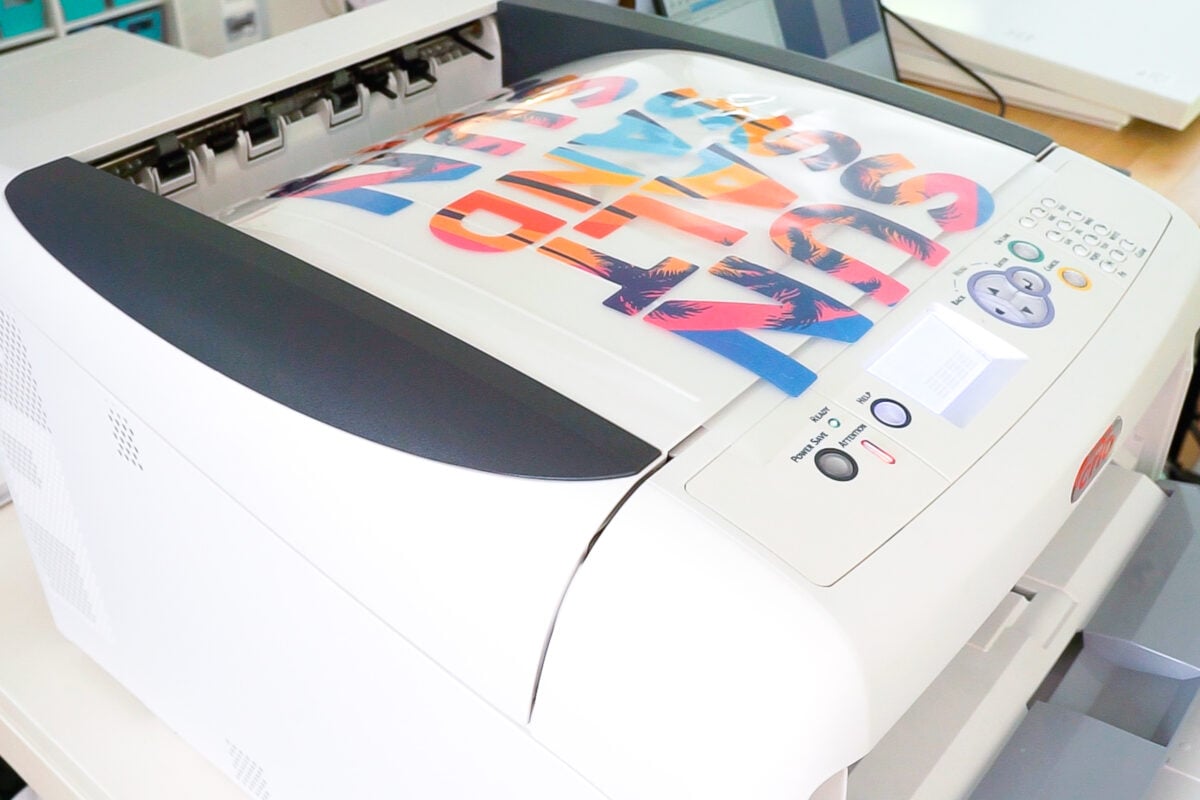
If you’re tired of some of the limitations and maintenance issues of sublimation printing and DTF printing, you might be interested in white toner printing. While it’s not for everyone, white toner printing is incredibly versatile compared to other printing technologies and requires virtually no maintenance.
If you aren’t familiar with the other printing types I mentioned above, check out my posts The Beginner’s Guide to Sublimation Printing and The Beginner’s Guide to DTF Printing. Read through all of my printer posts so that you can make the best choice for your needs and budget.
Today we’re going to talk about what white toner printing is. Then in future videos, we’ll talk about the specific printer I am getting (the Crio 8432WDT White Toner Printer) and how to print and use transfers on a wide variety of blanks. Let’s dive in!
Toner vs. Ink
To start, a white toner printer is a laser printer instead of an inkjet printer (like a sublimation or DTF printer). As such, it uses toner cartridges instead of ink cartridges. Toner is powdered whereas ink is liquid.
There are a few big benefits here. First, because the toner is powdered, you never have to worry about clogged print heads (I’ll talk about this more later in this post). Second, the printer itself is much faster than an inkjet printer.
CMYW vs. CMYK
Next let’s talk about the “white” part of this printer. The majority of printers print four colors called CMYK: cyan, magenta, yellow, and black. Anything that is white in your image is not printed and will show up as whatever color paper or substrate you are using.
White toner printers print CMYW: cyan, magenta, yellow, and white. Black is created using a combination of cyan, magenta, and yellow instead of a dedicated black color.
This white toner is the reason you can use these transfers on dark materials, including dark garments and dark hard surfaces. You can even print on dark cardstock using the white toner! The white not only allows you to print in white, it makes the other colors pop off dark blanks!

Cartridges are about $100 each but should last a long time depending on your prints. Many people say the white runs out the fast because it is not only used for white parts of an image, but as a blocker for the entire image.
If you’re a sublimation crafter wondering how you can print white, this is one of the answers. You can’t do it with sublimation, but you can do it with a white toner printer. DTF printing is another option.
White Toner Film / Paper
There are quite a few different options for the film or paper you will use with a white toner printer. If you are just starting out, you’ll want to probably stick with a basic set that includes an A sheet that you print on and a B sheet that has the adhesive. You use a standard heat press to apply the adhesive after your print is done in a process called “marrying.”
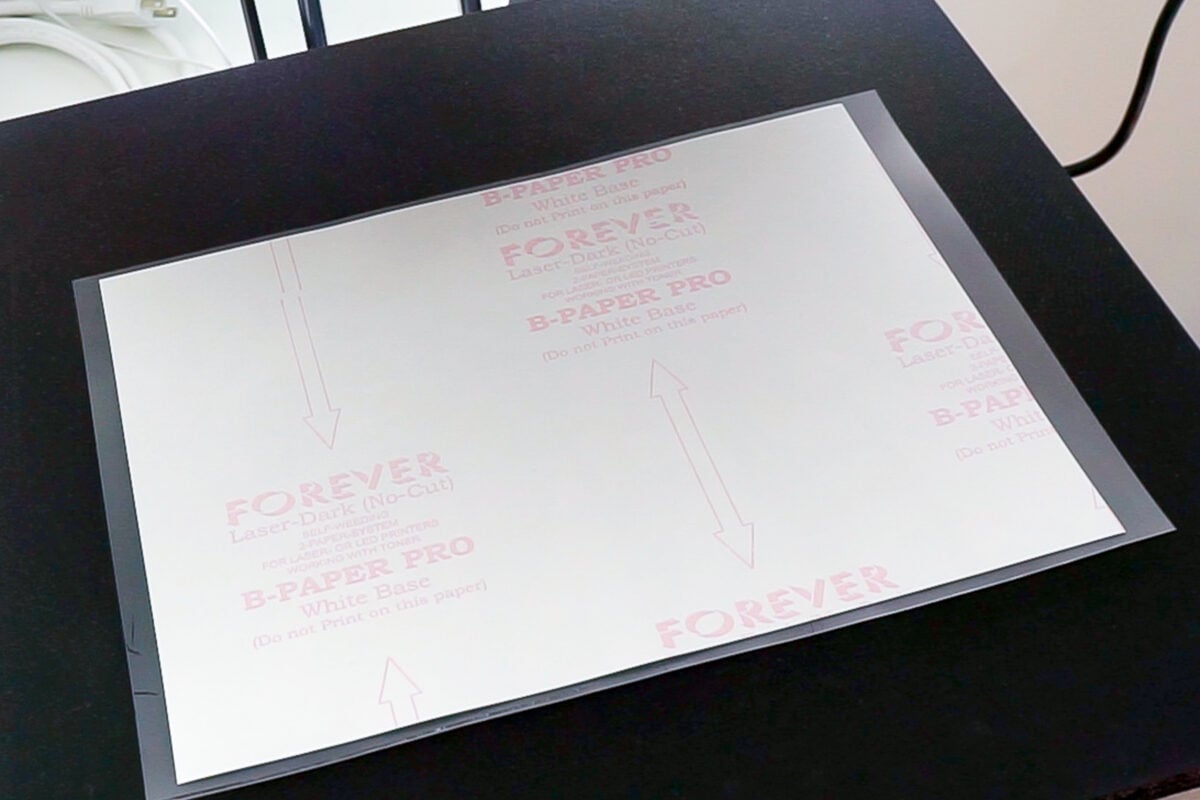
Transfers come out to $2 to $3 a print depending on your design, the size, and other factors. So not cheap, but less expensive than buying prints from a reseller.
But there are also specific film/paper options for light fabrics, dark fabrics, hard surfaces, foil, tattoo paper, soft surfaces, etc. There are so many different options that I think it would be best to do an entire post on the wide range of options you can use. Stay tuned!
Note that most of these films are cool peel (you’ll want for them to cool entirely after pressing them to your project). If you’ve been working with other processes that use a warm peel, you’ll just want to make sure you’re waiting that extra time.
I’ll go into all of this in more detail in my next white toner tutorial!
What Can You Make?
So what can you make with a white toner printer? So many things. While sublimation is limited to white and polyester/poly-coated blanks and DTF is limited to textile blanks, the sky is the limit with a white toner printer. Here are some of the things you can make:
- All sorts of garments in every color and most materials
- Soft textile projects like tote bags, pillow cases, hats, etc.
- Mugs, tumblers, and other drinkware
- Glassware
- Stickers
- Wood projects like signs and coasters
- Can koozies and other neoprene projects
- Temporary tattoos
- Mylar balloon decorations
- Cardstock projects including black and other dark cardstock
- Foil prints
I’ll be doing more in-depth videos on some of these so you can see exactly how to add a white toner transfer to something like a beer mug or a mylar balloon!
Maintenance
Maintenance is one of the things that makes the white toner printer so great. Because there is none! *cue cheering*
That white toner is a powder so it will not dry and clog your print heads. You can print a print today and unplug and let your printer sit for a few months and then plug it in and print again with no issues.
Maintenance can be a huge issue with DTF printers and some sublimation printers, so having a printer that doesn’t require constant printing and maintenance may be the biggest benefit of all to some users.
Software
White toner printers require a “RIP” software. This specialized software converts your image to include the white layer for printing. Most RIP software is a CADlink-brand software that has been white-labeled for your particular printer. Many printers come with RIP software, but if yours does not, you’ll need to calculate that into your costs.
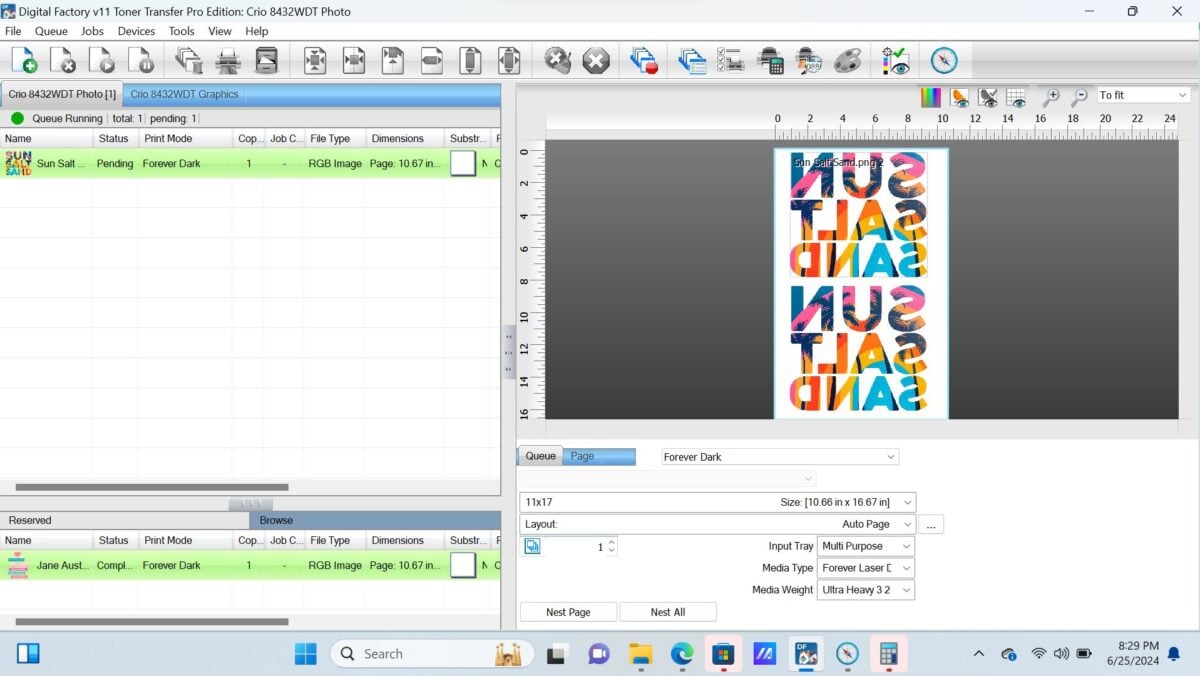
The biggest downside here is that you do need a PC to run the RIP software. I am a Mac girl, so I had to purchase a PC. I found an open box (returned) PC at Best Buy for about $300. I don’t plan on using it for anything except running RIP software so I got as few bells and whistles as possible. Make sure to factor this in before you purchase if you do not have a PC.
Safety
One of the biggest downsides to DTF printing is the safety factor. You can read all about it in my post Is DTF Printing Safe?
White toner printing is definitely a better route to go if you’re concerned about safety. Overall, you just want to increase ventilation in your workspace by blowing any bad air out of the room using a fan.
White toner printing also requires a much lower pressing temperature than something like sublimation. Instead of nearing 400°, we’re around 300°.
Learning Curve
Like with any new craft, there is a learning curve to white toner printing. I think you’ll need to do most of your learning around which type of transfer film to use and how to do the marrying process properly.
Using the printer and software, however, are a cinch. If you are totally overwhelmed by the process and/or safety issues with a DTF printer, you may find a white toner printer to be a better option.
White Toner Printer Cost
Here is where the rubber meets the road. Yes you can make a huge variety of projects using a white toner printer—more than either sublimation or DTF printing. And yes, there is absolutely no maintenance, making this machine very easy to own.
But all of that comes at a cost. The retail price of the Crio I have is $7,995. Yep, that’s quite an investment. However, I’ve seen them on sale at Heat Transfer Warehouse for as low as $6,795, which is a significant discount. There are some other options for smaller prints that are under $4,000 as well. Financing is available for many buyers.
This is not a printer for everyone! I don’t expect that many of my readers who have converted an Epson EcoTank for sublimation printing for less than $200 would want to go out and spend several thousand dollars on a white toner printer.
In my next post, I’ll talk more about the Crio white toner printer in particular, including the Profit Calculator they have so you can see how you might earn back your investment by selling items you’ve made with your printer.
But if you have a small craft business and you’re looking for an alternative to DTF printing (which runs around $5,000 for the machine I recommend), then this may well be worth the investment. It was for me!
Which White Toner Printer is Best?
This is definitely subjective and not one I can answer personally because I have only used my Crio 8432WDT white toner printer. This printer prints nice large 11×17 prints and comes with a ton of support from the company.
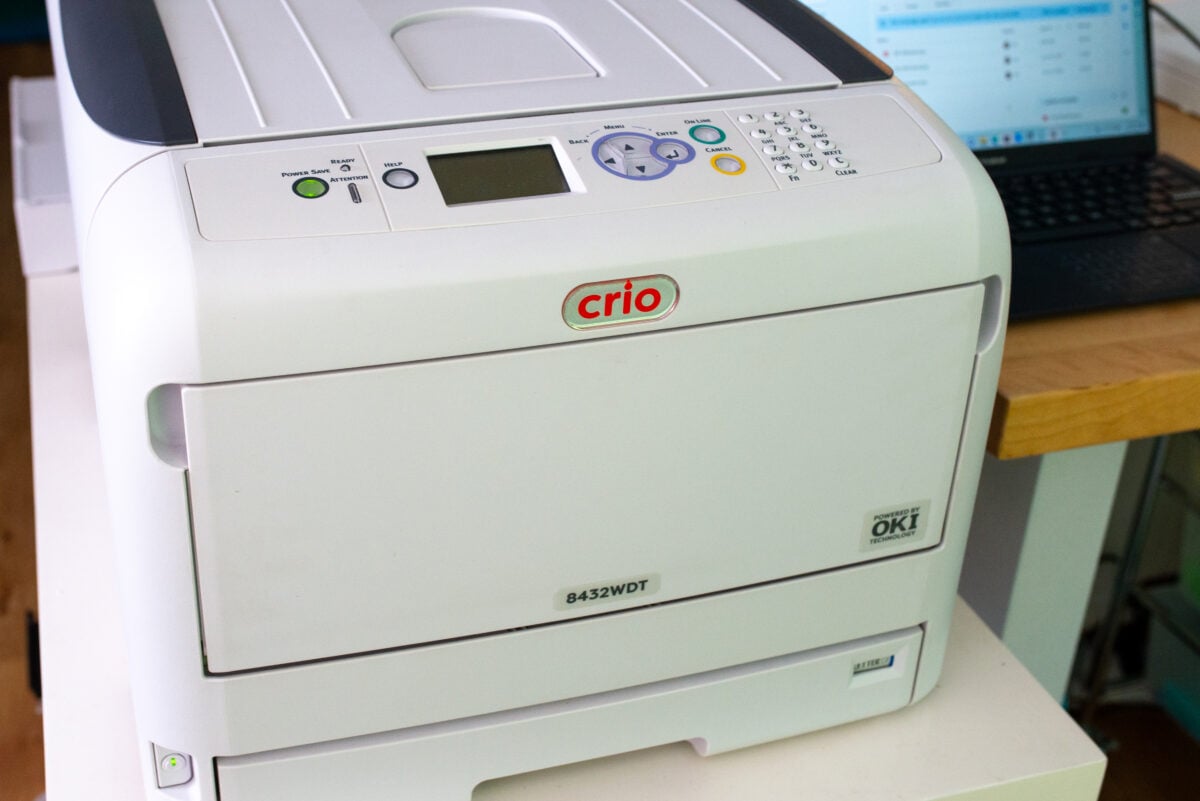
No matter which printer you end up purchasing, you definitely want something with manufacturer support and a warranty. Yes you can probably find a (relatively) cheaper white toner printer directly from China or buy a used printer, but you are most likely going to want the backing of a solid company ready to help you out if you’re having any trouble.
Pros and Cons of White Toner Printing
Let’s sum up this post with my pros and cons of white toner printing.
Pros
- Huge variety of blanks including garments and hard surfaces
- Prints white
- Thinner than HTV and has a soft feel
- Can use any color blank
- Relatively easy to use
- No maintenance
- Safe to use
Cons
- Higher price
- Moderate learning curve
- Doesn’t “embed” with the blank like sublimation
So did I answer the question “what is white toner printing?” for you? Does a white toner printer sound like something you’d like to have in the future? Do you think it would be a good investment for your small business?
I can’t wait to share more about all of the cool projects you can make using this printer!
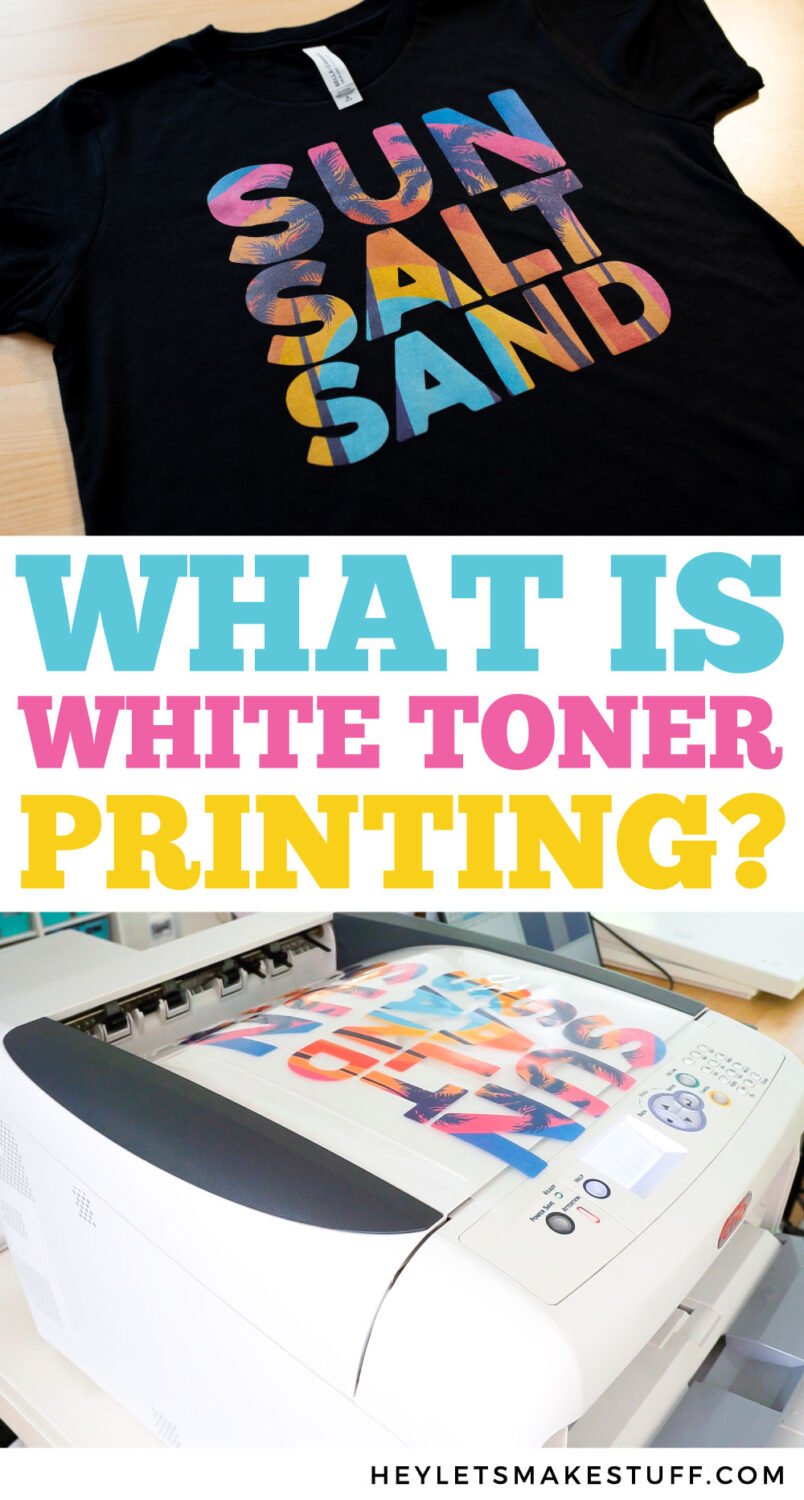
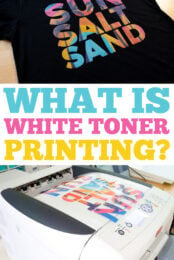


Leave A Reply!